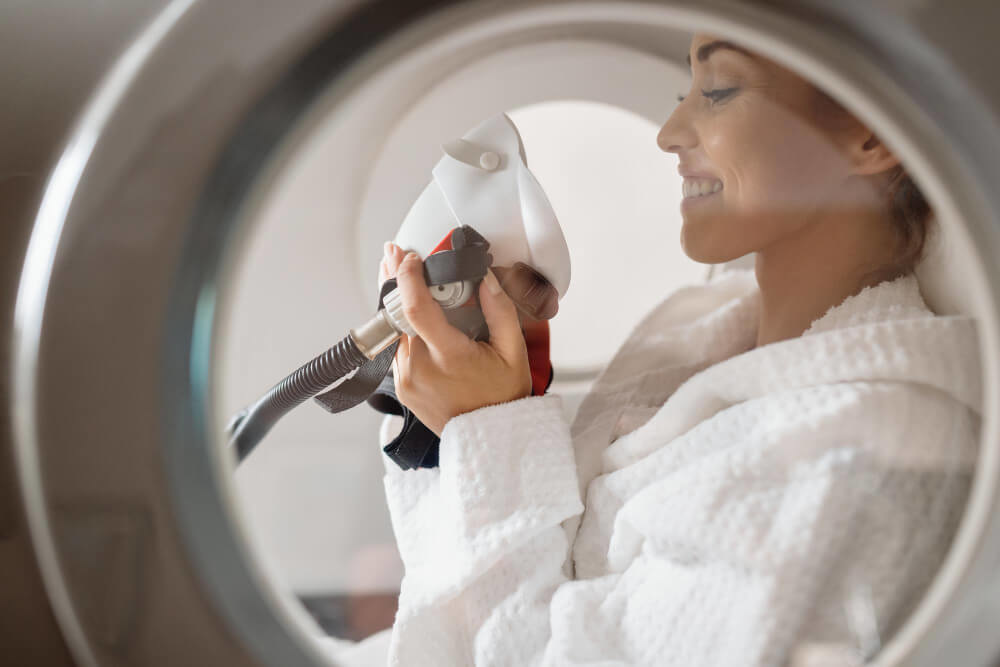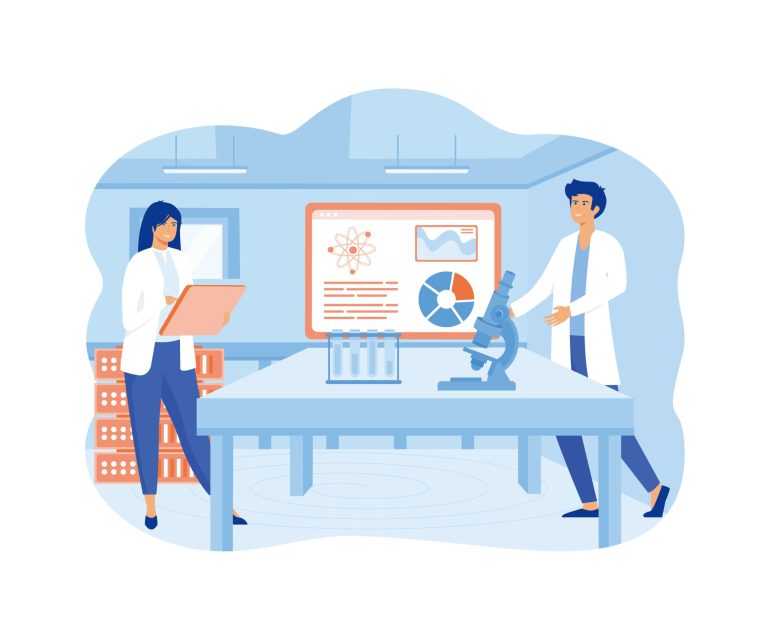Live Longer, Healthier: The Ultimate Guide to Longevity Training
We all share a common human desire: to live a long life. But what if we could redefine that goal? Instead of just adding more years to our life, what if we could add more life to our years? This is the core principle behind increasing your healthspan, the period of life spent in good health, free from chronic disease and disability.
This proactive approach to aging is the essence of a powerful and growing field. It moves beyond the reactive model of treating sickness and instead focuses on building a resilient foundation for a vibrant, functional future. A comprehensive longevity training program is your roadmap to achieving this, integrating targeted exercise, precise nutrition, and strategic lifestyle habits to optimize your biology.
This isn’t about finding a mythical fountain of youth. It’s about using science-backed strategies to slow the aging process at a cellular level, giving you the strength, energy, and cognitive clarity to enjoy every chapter of your life to the fullest. It’s a journey of empowerment, putting you in the driver’s seat of your own health destiny.

What Exactly Is Longevity Training?
Longevity training is a holistic system designed to maximize both lifespan and healthspan. It differs significantly from traditional fitness, which often prioritizes short-term goals like aesthetics or athletic performance. While those can be welcome side effects, the primary focus here is on long-term health, functional capacity, and disease prevention.
Think of your body as a high-performance vehicle you want to keep running smoothly for a century. Longevity training is the meticulous, science-informed maintenance plan. It involves a personalized strategy that considers key pillars of health: strategic exercise, targeted nutrition, restorative sleep, and effective stress management.
This approach is data-driven and deeply personal. It’s not about following a generic workout plan from a magazine. It’s about understanding your unique biology and applying specific interventions to enhance your body’s natural ability to repair, regenerate, and thrive as you age.

Why Is Movement the Cornerstone of a Long Life?
If there is one single habit that has the most profound impact on how well we age, it is consistent physical activity. Our bodies were designed to move. From our musculoskeletal framework to our cardiovascular system and even our brain, movement is the signal that tells our body to stay strong, capable, and resilient.
When we are sedentary, we send the opposite signal. This is the ‘use it or lose it’ principle in action. Muscles begin to atrophy, a condition known as sarcopenia, which is a major driver of frailty in older age. Bones lose density, increasing the risk of osteoporosis and fractures. Our metabolic health declines, and our cognitive function can suffer.
Regular movement is also one of our most powerful tools against chronic inflammation, a key driver of nearly every age-related disease. Exercise helps regulate inflammatory responses, improve insulin sensitivity, and support a healthy immune system. It’s not just about burning calories; it’s about communicating with your DNA and instructing it to build a more robust, age-defying machine.

What Are the Four Pillars of Longevity Exercise?
A truly effective exercise program for longevity is not random. It is a carefully balanced portfolio of different types of movement, each targeting a specific aspect of aging. To build a comprehensive routine, you need to incorporate four critical pillars: strength, cardiovascular fitness, stability, and mobility.

How Does Strength Training Preserve Youthful Function?
Maintaining skeletal muscle mass is arguably the most important thing you can do for your healthspan. Muscle is our metabolic currency. The more muscle we have, the better our bodies are at managing blood sugar, which helps prevent metabolic syndrome and type 2 diabetes. Strong muscles also act as a protein reservoir that the body can draw upon during times of illness or injury, improving recovery outcomes.
Strength training directly combats sarcopenia, the age-related loss of muscle mass and function. It stimulates muscle protein synthesis, signaling your body to build and maintain lean tissue. Furthermore, the mechanical stress of resistance training on your bones is a powerful signal for them to absorb minerals and increase their density, directly fighting osteoporosis.
Focus on compound exercises that work multiple muscle groups at once, like squats, deadlifts, overhead presses, and rows. These functional movements mimic real-life activities, ensuring the strength you build in the gym translates to a more capable and independent life outside of it.

What Kind of Cardio is Best for a Long Life?
Cardiovascular exercise is essential for a healthy heart, but a longevity approach gets more specific than just going for a jog. It focuses on training two different energy systems to build a robust and efficient cardiovascular engine. This involves a mix of low-intensity and high-intensity work.
The first component is Zone 2 training. This is low-intensity, steady-state cardio performed at a pace where you can comfortably hold a conversation. The goal is to spend a significant amount of time, perhaps 150-180 minutes per week, in this zone. This type of training is exceptional for improving mitochondrial health. Mitochondria are the power plants of our cells, and their decline is a hallmark of aging. Zone 2 training makes them more numerous and efficient, boosting your energy and metabolic health.
The second component is VO2 max training. VO2 max is the maximum amount of oxygen your body can utilize during intense exercise, and it is one of the strongest predictors of future cardiovascular events and all-cause mortality. This training involves short, all-out efforts that push you to your limit, such as 4-minute intervals with a few minutes of recovery in between. Just one or two short sessions per week can dramatically improve this crucial health marker. Incorporating these practices helps you meet and exceed the current physical activity guidelines for optimal health.
This dual approach to cardio provides a wealth of benefits. Beyond a stronger heart and lungs, it improves blood pressure, circulation, and cholesterol profiles. The well-documented heart benefits of exercise are a cornerstone of any effective anti-aging strategy, making this type of training non-negotiable for a long and healthy life.

Why Do Stability and Mobility Matter So Much?
Strength and cardio are vital, but they are incomplete without a focus on stability and mobility. As we age, a loss of balance and flexibility can lead to devastating falls, which are a leading cause of injury and loss of independence among older adults. Stability and mobility training is the preventative medicine that keeps you on your feet and moving freely.
Mobility refers to your ability to move a joint through its full range of motion, while stability is the ability to control that movement and maintain balance. Together, they allow you to perform everyday tasks with ease and without pain, from tying your shoes to putting something on a high shelf or playing with grandchildren.
Activities like yoga, tai chi, and Pilates are excellent for developing these skills. You can also incorporate specific mobility drills into your warm-ups before strength training or dedicate one session a week to focused stability work. This pillar of fitness is your insurance policy against frailty, ensuring you remain self-sufficient and confident in your physical abilities for decades to come.

How Does Exercise Affect Aging at the Cellular Level?
The benefits of exercise go far deeper than just muscles and bones; they penetrate right down to our cells. Physical activity acts as a powerful hormetic stressor, meaning it’s a beneficial stress that stimulates our cells to become stronger and more resilient. This process can have profound anti-aging effects at the cellular level.
Exercise triggers a process called autophagy, which is the body’s cellular cleanup crew. During autophagy, cells remove damaged components, misfolded proteins, and dysfunctional mitochondria. This cellular housekeeping is crucial for preventing the accumulation of junk that contributes to aging and disease.
Furthermore, exercise has been shown to protect telomeres, the protective caps at the end of our chromosomes. Telomeres naturally shorten as we age, and shorter telomeres are associated with a host of age-related conditions. Regular physical activity can help preserve telomere length, effectively slowing down the aging clock at a genetic level.

How Does Nutrition Fuel Longevity?
Exercise is the spark, but nutrition is the fuel that powers a long and healthy life. You cannot out-train a poor diet. The food you eat provides the building blocks for every cell in your body, influences your hormones, and can either promote inflammation or fight it.
A longevity-focused diet isn’t about rigid rules or fad diets. It’s about adhering to a set of core principles. The foundation is a diet rich in whole, unprocessed foods. This means plenty of colorful vegetables and fruits, which are packed with phytonutrients, antioxidants, and fiber. These compounds help protect your cells from oxidative stress, a key driver of aging.
Sufficient protein intake is also critical, especially as we age, to support the muscle-building effects of strength training. Prioritize high-quality sources like lean meats, fish, eggs, and legumes. Healthy fats from sources like avocados, nuts, seeds, and olive oil are essential for brain health and for reducing inflammation.
Many people exploring longevity also experiment with meal timing, such as time-restricted eating, to promote cellular repair processes like autophagy. While the specifics can be personalized, the universal goal is to nourish your body with nutrient-dense foods while minimizing processed items, refined sugars, and inflammatory fats. Consulting the body of scientific evidence on longevity can help guide choices on specific foods and supplements that have been studied for their impact on aging.

What About the Non-Exercise Components?
While a structured exercise plan is the engine of longevity, it won’t get very far without the support of other critical lifestyle factors. A truly holistic approach must also address sleep and stress, two areas that have a massive impact on our rate of aging.

Why Is Sleep a Superpower for Anti-Aging?
Sleep is not a passive state of rest; it is an active and vital period of repair and rejuvenation. During deep sleep, your body ramps up the production of growth hormone, which is essential for repairing tissues like muscle and skin. Your brain also undergoes a nightly detox, clearing out metabolic byproducts that can accumulate and contribute to cognitive decline.
Chronic sleep deprivation has the opposite effect. It disrupts hormone regulation, increases levels of the stress hormone cortisol, and impairs insulin sensitivity. It weakens your immune system and promotes a state of chronic inflammation. Prioritizing seven to nine hours of quality sleep per night is one of the most effective anti-aging strategies available.
To improve your sleep, establish a consistent sleep schedule, even on weekends. Create a cool, dark, and quiet sleep environment. Avoid screens and heavy meals before bed, and develop a relaxing wind-down routine to signal to your body that it’s time to rest and repair.

How Does Stress Accelerate Aging?
Chronic stress is a silent accelerator of the aging process. When you’re constantly stressed, your body is flooded with cortisol. While cortisol is useful in short bursts for ‘fight or flight’ situations, chronically high levels wreak havoc on your health. It breaks down muscle tissue, promotes fat storage, disrupts sleep, and suppresses the immune system.
This sustained state of alert also fuels chronic inflammation, creating a biological environment that is ripe for the development of age-related diseases. Managing stress is not a luxury; it is a necessity for anyone serious about longevity.
Effective stress management techniques can include mindfulness meditation, deep breathing exercises, spending time in nature, or engaging in hobbies you love. These practices help activate your parasympathetic nervous system, the ‘rest and digest’ state that counteracts the ‘fight or flight’ response. By learning to manage your stress, you can protect your body from its corrosive effects and preserve your vitality.

How Can I Start My Own Longevity Training Plan?
Starting a longevity training plan can feel overwhelming, but it doesn’t have to be. The most important principle is to start small and build consistency. You don’t need to completely overhaul your life overnight. Begin by incorporating one or two new habits.
If you’re new to exercise, start with a 20-minute walk each day. Then, add one or two full-body strength training sessions per week using your body weight or light dumbbells. The goal is to make the habit stick. Consistency will always beat short-term intensity.
Listen to your body. Some days you will feel strong and energetic, while other days you may need more rest. This is normal. Pushing through pain can lead to injury, which is a major setback. The goal is sustainable progress over a lifetime, not rapid transformation in a few weeks.
Track your progress beyond the scale. Pay attention to how you feel. Do you have more energy? Are you sleeping better? Do you feel stronger during your workouts and in daily life? These are the true indicators that your longevity plan is working.

When Should I Consider Professional Guidance?
While you can make significant progress on your own, partnering with a professional can accelerate your results and provide a much deeper level of personalization. A qualified coach or clinician can help you design a program tailored to your specific goals, genetics, and current health status.
For those seeking the most advanced strategies, the field of longevity medicine offers powerful tools. Professionals with expertise in this area can analyze blood work and other biomarkers to identify your unique biological weak points and create a targeted plan to address them. This can involve precise nutritional protocols, advanced supplementation, and other cutting-edge therapies.
Understanding the professional side of this field is also valuable. For healthcare professionals interested in this specialty, pursuing longevity medicine training provides the skills to guide patients with evidence-based, personalized anti-aging protocols. Working with an expert can take the guesswork out of the process and ensure you are using the safest and most effective strategies to enhance your healthspan.
Longevity training is not about cheating death. It is about embracing life. It is a commitment to showing up as the best version of yourself, with the energy, strength, and health to pursue your passions and enjoy your relationships for as long as possible. It is the ultimate investment in your future self.
Frequently Asked Questions

How does longevity medicine certification differ from traditional anti-aging or functional medicine credentials?
Longevity medicine certification is distinct in its primary focus on geroscience, the study of the biological mechanisms of aging itself. While functional medicine seeks the root cause of existing disease and anti-aging often addresses the external symptoms of aging, longevity medicine aims to proactively extend a patient’s healthspan by targeting the fundamental hallmarks of aging at a cellular and molecular level. The core goal is not just to manage disease, but to delay its onset by optimizing the body’s resilience and repair systems.
Furthermore, a formal certification in longevity medicine typically emphasizes a more rigorous, data-driven approach using advanced diagnostics. This includes interpreting complex information from genomic sequencing, epigenetic clocks, proteomics, and advanced biomarkers to create a highly personalized health strategy. The curriculum is deeply rooted in cutting-edge research on pathways like mTOR and AMPK, preparing physicians to utilize interventions that directly modulate the biology of aging, a level of scientific depth that may not be the central focus of other wellness credentials.

What is the practical impact of this certification on my day-to-day patient care?
Obtaining a certification in longevity medicine will fundamentally shift your practice from a reactive model to a proactive, predictive one. Instead of primarily treating patients who present with symptoms, you will develop long-term strategies for healthy individuals aiming to optimize their future well-being. Your patient consultations will evolve to include in-depth discussions about highly personalized lifestyle, nutrition, and supplement protocols based on unique biomarker and genetic data, moving far beyond standard preventative health screenings.
This specialized training equips you with the skills to confidently integrate and interpret a wide array of advanced health data, from continuous glucose monitors and wearables to comprehensive genomic reports. You will be able to translate this complex information into actionable, evidence-based interventions for your patients. This transforms the physician-patient relationship into a collaborative partnership focused on strategically building a foundation for a longer, healthier life.

Will my existing medical malpractice insurance cover the advanced diagnostics and treatments taught in these programs?
It is crucial to proactively engage with your medical malpractice insurance carrier before integrating longevity medicine services into your practice. While many aspects of longevity care, such as advanced nutrition and lifestyle coaching, fall within the scope of preventative medicine, some of the more advanced treatments may be considered novel or outside the current standard of care by insurers. Full transparency about your new certification and the specific services you intend to offer is the first step to ensuring you are adequately covered.
To mitigate risk and confirm coverage, you should provide your insurer with a detailed outline of the new diagnostic tests and therapeutic protocols you plan to use. It is wise to secure their position in writing, as some carriers may require a special endorsement, or rider, for your policy or may have specific exclusions. Meticulous documentation, comprehensive informed consent that clearly explains the innovative nature of the treatments, and a commitment to evidence-based practices are your strongest defenses in protecting your practice.
Discover the most comprehensive functional medicine training, longevity training, and biohacking certification programs designed specifically for healthcare professionals, medics, and clinic owners who want to master regenerative medicine protocols and anti-aging therapies. At Talking Longevity, we deliver cutting-edge education in cellular health optimization, nutritional medicine, hormone balancing, NAD+ therapy, and advanced bio-hack strategies to help you extend patient health span, improve outcomes, and grow your clinic’s revenue. Our globally accessible longevity training courses combine evidence-based science with practical implementation, giving you the tools to stand out in the fast-growing fields of personalized medicine, integrative health, and regenerative longevity medicine. Whether you’re seeking functional medicine certification, biohacking training for medics, or a complete longevity clinic growth strategy, our programs equip you with the skills, credibility, and business systems to lead the future of health.







